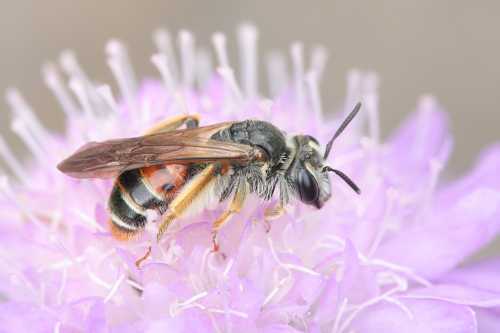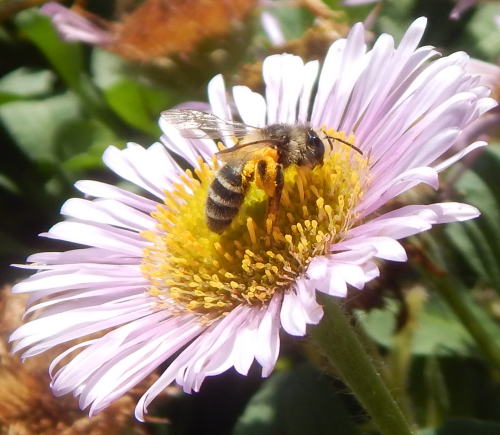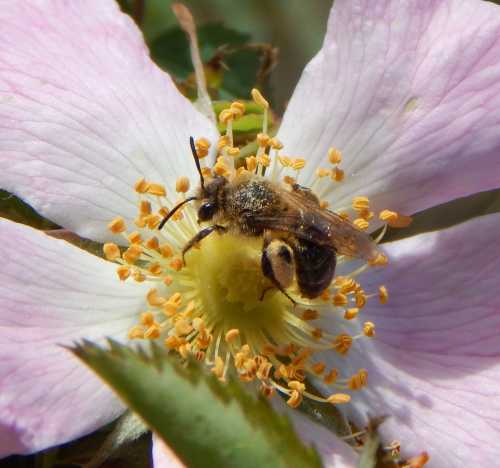Large Scabious Mining Bee - Andrena hattorfiana
A lovely mining bee, the large scabious mining bee - Andrena hattorfiana is found in Europe, including Britain where it is considered rare, and recorded only in southern England.
Large Scabious Mining Bee - Andrena hattorfiana: habitat and foraging
 Large Scabious Mining Bee -Andrena hattorfiana - female feeding on Field Scabious, Knautia arvensis
Large Scabious Mining Bee -Andrena hattorfiana - female feeding on Field Scabious, Knautia arvensisThis bee species, a member of the Andrenidae bee family, requires scabious-rich habitat found in chalky landscapes and sandy soils that are typical of coastal soft rock cliffs and chalk downland1.
It is heavily reliant on pollen from the teasel plant family (Dipsacaceae) and especially the wildflower herb, field scabious, Knautia arvensis.
Research has confirmed a strong relationship between Andrena hattorfiana population sizes and abundance of Knautia arvensis2. Thus reliance on such a restricted pollen resource contributes to the vulnerability of this species.
It was found that one Andrena hattorfiana nest requires 72 inflorescences or 11 individual field scabious plants to provision her nest. Furthermore, the authors of the study state that ten individual reproducing Andrena hattorfiana females would need between 140 and 172 plants to adequately supply their nests with pollen. It was suggested that such calculations (in effect, a ‘pollen budget’) could aid conservation efforts by providing a tool to assist calculation of adequate floral provision for this species2.
Nests
Nests are dispersed rather than in close aggregations. The female excavates a tunnel which, the aforementioned found study2 will typically contain on average of 6 cells, but up to 10 cells.
Physical characteristics
According to Falk1, females are 11-12mm, and as such, are the largest mining bee species found in the UK. Females may be all black or with a red band on the abdomen.
Males are about 10.5mm.
As a member of the Andrenidae bee family, Andrena hattorfiana is categorized as a short-tongued species.
Parasites
Andrena hattorfiana is targetted by the nomad bee, Nomada armata.
References
1. Field Guide to Bees Of Great Britain And Ireland by Steven Falk.
2. Magnus Larsson, Markus Franzén, Critical resource levels of pollen for the declining bee Andrena hattorfiana (Hymenoptera, Andrenidae), Biological Conservation, Volume 134, Issue 3, 2007, Pages 405-414, ISSN 0006-3207, https://doi.org/10.1016/j.biocon.2006.08.030.

